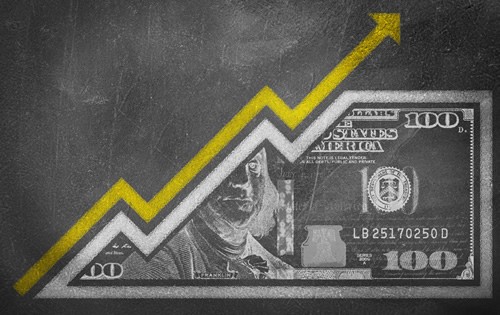This is part 2 of an overview on inflation. We discuss what the media/experts are saying about inflation and how to protect yourself from high inflation. Please feel free to post any follow up questions or comments in the comments section below.
What is the media/experts saying about inflation? By summer, there are many economists that are estimated that the cost of living (i.e. inflation) will be up to 2.0% on a yearly basis and likely push past the Federal Reserve’s 2.0% target. And there is evidence of pricing prices. Economists have interviewed recent purchasing managers who showed their companies are paying for higher prices for a wide array of supplies. Oil prices are rising too. The cost of petroleum has jumped 25% since early January after Saudi Arabia and other providers outside the U.S. slashed production. That’s also feeding into higher prices. Lastly, the U.S Government just passed the $2 trillion in new financial aid which should further fuel inflation. There are differing opinions on how long inflation above 2.0% will take place. Fed Chairman Jerome Powell have stated that price increases above 2.0% won’t last long. He has said in numerous occasions that the burst of inflation will die quickly and high inflation does not pose a long-term threat to the economy. But Some economists have warned that this short-term spike in inflation will create uncertainty among investors, drive interest rates higher, and potentially weaken the economic recovery. The United States Secretary of the Treasury Janet Yellen also reiterated she does not think there will be high inflation long term. She recently stated that there was 3.5% unemployment rate before the pandemic and there was no sign of inflation increasing. Her reference is back in February 2020 when before the 24 million of job losses, inflation was below the Fed’s 2% inflation target. Janey Yellen did say if inflation does become a problem there are many tools the government can use to address high inflation. Policymakers will be monitoring the situation and will be prepared to act if inflation gets above 2%.
Why Retirees Should Care? Inflation affects your retirement savings by offsetting your investment growth. For example, if your retirement account say grows by 10% this year, but inflation was 3%, then your net purchasing power growth is only 7%. A shorter period of higher than normal inflation isn’t going to ruin your retirement prospects, but longer term it definitely can. If you are in a conservatively invested and say earning only 4-5% per year, you won’t want to absorb 3%+ inflation as your purchasing power will go down considerably.
How to Project Yourself? The best way to protect yourself from inflation is to increase your earning ability and income. If you get a 10% pay bump that will make inflation irrelevant. However, we all know that may not be an option for everyone, especially for people who are on a fixed income, then you will need to explore other options.
- Continue to invest in the stock market: Equity investing is an effective inflation hedge because the general stock market tends to outpace inflation. This is based on a long period of time as there can be years where inflation is higher than the stock market performance. The best way to invest in the stock market for inflation purposes is to invest in companies that are poised to march through an inflationary period mostly unscathed. These are companies that already produce ample cash and can raise their prices without losing customers. For example, you’ll keep buying toilet paper and milk, even at higher prices. Companies that produce, distribute, or sell necessities can do well in inflationary times. Discretionary products and services are more likely to falter.
- Rethink the emergency fund: While many experts may tell you to dump your cash when inflation is on the rise, I think its still important to have a reserve in your hands. The reason is, if you have to borrow money, you might have to borrow it at a very high rate of return. If prices are rising, a small emergency fund may not be sufficient to cover living expenses after an income loss.
- Review debt balances: An important item to check is what debt you have outstanding and if any of those interest rates are variable. Also while rates are low now, it might be time to review your highest-rate debt balances and find opportunities to refinance or consolidate into fixed-rate loans.
- Invest in inflation protected investments: There are two instruments that you can purchase from the U.S. Treasury that will protect you from inflation
- Treasury Inflated Protected Securities (TIPS): These pay a fixed rate of interest. Twice a year the government re-adjusts the principal in response to changes in the Consumer Price Index, as published monthly by the Bureau of Labor Statistics. This means that, as inflation increases, the value of the bond increases. Although the interest rate doesn’t increase, holders get a larger cash payment because the percentage is applied to a larger principal. TIPS do well during inflation but do worse during times of non-inflation or stability.
- Series I Bonds: Series I Bonds offer a guaranteed fixed rate of return for the life of the bond. They are also affected by a variable rate that is indexed to the CPI and is reset in November and May. The return you get for the bond is a composite of its fixed rate and the variable rate in effect at that time.

